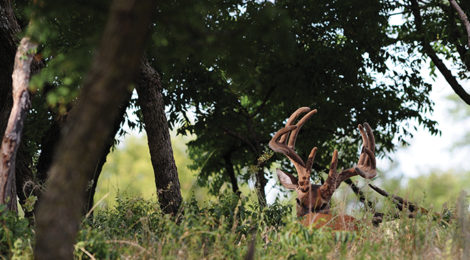
The Importance of Brush
To protect and enhance brush species that deer depend, they must be identified and that takes practice.
Story and photography by Bob Zaiglin
As a buck walked through a lush strip of buffle grass the spring morning sun gilded the velvet-covered pedicels erupting on his head. Every once in a while, he would pause, propelling its head upright, facilitating its olfactory system to do its job of detecting alien odors. Immobile for a minute, it moved towards the brush line littered with kidneywood, pausing once again to consume the palatable and nutritious terminal ends of the plant’s stems.
Feeding for several minutes, the buck jerked its head upright once again, focusing on a pair of yellow eyes in an opening in the thick brush belonging to a coyote staring back at him. The buck responded by driving its right front foot repeatedly into the sandy soil as if to challenge the predator, but the coyote was not hungry enough to take on a 160 pound buck and disappeared back into the sea of thornscrub.
All brush species, whether nutritious or not, play a role in the survival of wildlife. Quisache, for example, may not be a staple in a deer’s diet, but it represents shade, protecting them from the debilitating rays of the summer sun and the blistering cold of winter. Buffle grass may be a less than desirable food source, but is an excellent place for fawns to escape the wrath of their number one four-legged enemy — the coyote.








